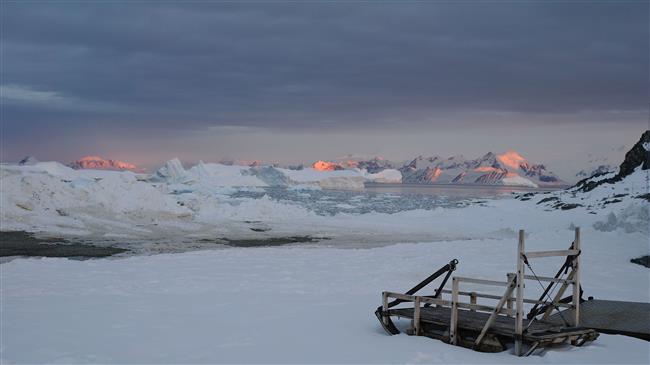At least 1/3 of Himalayan glaciers will melt, study warns
At least a third of the ice in the Himalayas and the Hindu Kush will thaw this century as temperatures rise, disrupting river flows vital for growing crops from China to India, scientists say.
Vast glaciers make up the Hindu Kush Himalaya (HKH) region — which is home to the world's highest peaks topped by Mount Everest and K2 — a "third pole" after Antarctica and the Arctic region, said the authors of the Hindu Kush Himalaya Assessment.
The report, by 210 authors, said that more than a third of the ice in the region will melt by 2100 even if governments take tough action to limit global warming under the 2015 Paris climate agreement. If they don't take such action, two-thirds of the ice will melt, the study said.
"This is the climate crisis you haven't heard of," said Philippus Wester, who led the report.
"Global warming is on track to transform the frigid, glacier-covered mountain peaks of the HKH cutting across eight countries to bare rocks in a little less than a century," said Wester of the International Centre for Integrated Mountain Development (ICIMOD).
Ice in the Hindu Kush Himalaya region would push up sea levels by 1.5 meters if it all melted, said Eklabya Sharma, the deputy director general of ICIMOD.
Glaciers in the Hindu Kush-Himalaya region are a critical water source for some 250 million people in the mountains as well as to 1.65 billion others in the river valleys below, the report said.
The glaciers feed 10 of the world's most important river systems, including the Ganges, Indus, Yellow, Mekong, and Irrawaddy, and directly or indirectly supply billions of people with food, energy, clean air, and income.
Impacts on people from their melting will range from worsened air pollution to more extreme weather, while lower pre-monsoon river flows will throw urban water systems and food and energy production off-kilter, the study warned.
But more research is needed to gauge exactly how glaciers affect distant crops, said Wouter Buytaert, of the Imperial College in London, who was not involved in the study.

"While glacier meltwater propagates downstream, it mixes with water from other sources such as direct rainfall, wetlands, and groundwater, up to a point where the impact of glacier melting may become negligible," Buytaert said.
The authors said that people living in small island states were often viewed as the most vulnerable to climate change because of rising sea levels.
"It's not just occupants of the world's islands that are suffering," said Dasho Rinzin Dorji, an ICIMOD board member from Bhutan.
He said in a statement that mountain regions were also extremely vulnerable as "climate hotspots."
The 2015 Paris agreement's central aim was to keep a global temperature rise this century well below two degrees Celsius above pre-industrial levels and to pursue efforts to limit the temperature increase even further to 1.5 degrees Celsius.
In December last year, world leaders at the COP24 talks in Poland agreed on a common rule book to implement the accord.
But major polluters, including the United States and Saudi Arabia, disputed a landmark scientific report released in October last year that suggested nations must slash fossil fuel use by nearly half in a little over a decade.
The new report said that even if the 1.5-degrees target is achieved, it would mean a rise of 2.1 degrees in the Himalayas region.
If emissions are not reduced, the rise will be five degrees.
The Himalayan glaciers, formed some 70 million years ago, are highly sensitive to changing temperatures.
Since the 1970s, they have thinned and retreated, and areas covered by snow and snowfall have decreased.
As the glaciers shrink, hundreds of risky glacial lakes can burst and unleash floods.
Satellite data shows that numbers of such lakes in the region grew to 4,260 in a decade from 3,350 in 1990.
Air pollution from the Indo-Gangetic Plains — one of the world's most polluted regions — also deposits black carbon and dust on the glaciers, hastening melting and changing monsoon circulation, the ICIMOD study said.
The region would require up to 4.6 billion dollars per year by 2030 to adapt to climate change, rising to as much as 7.8 billion dollars per year by 2050, according to an estimate in the report.
(Source: Agencies)
Imam Reza (AS) holy shrine begins accepting crypto donations
VIDEO | Newborn deaths surge in Gaza amid siege and maternal malnutrition
VIDEO | Pakistan, China conclude joint counterterrorism drills
Palestinian authorities slam ‘dangerous’ Israeli plan for 9,000 West Bank settler homes
‘Israeli actions, not Iran, fuel anti-Semitism’: Netizens react to Jewish holiday attack in Sydney
Iran opposes Trump's corridor plan for Caucasus: Leader’s aide
VIDEO | Press TV's news headlines
Iran offering aircraft maintenance services to Venezuela: Aviation chief















 This makes it easy to access the Press TV website
This makes it easy to access the Press TV website